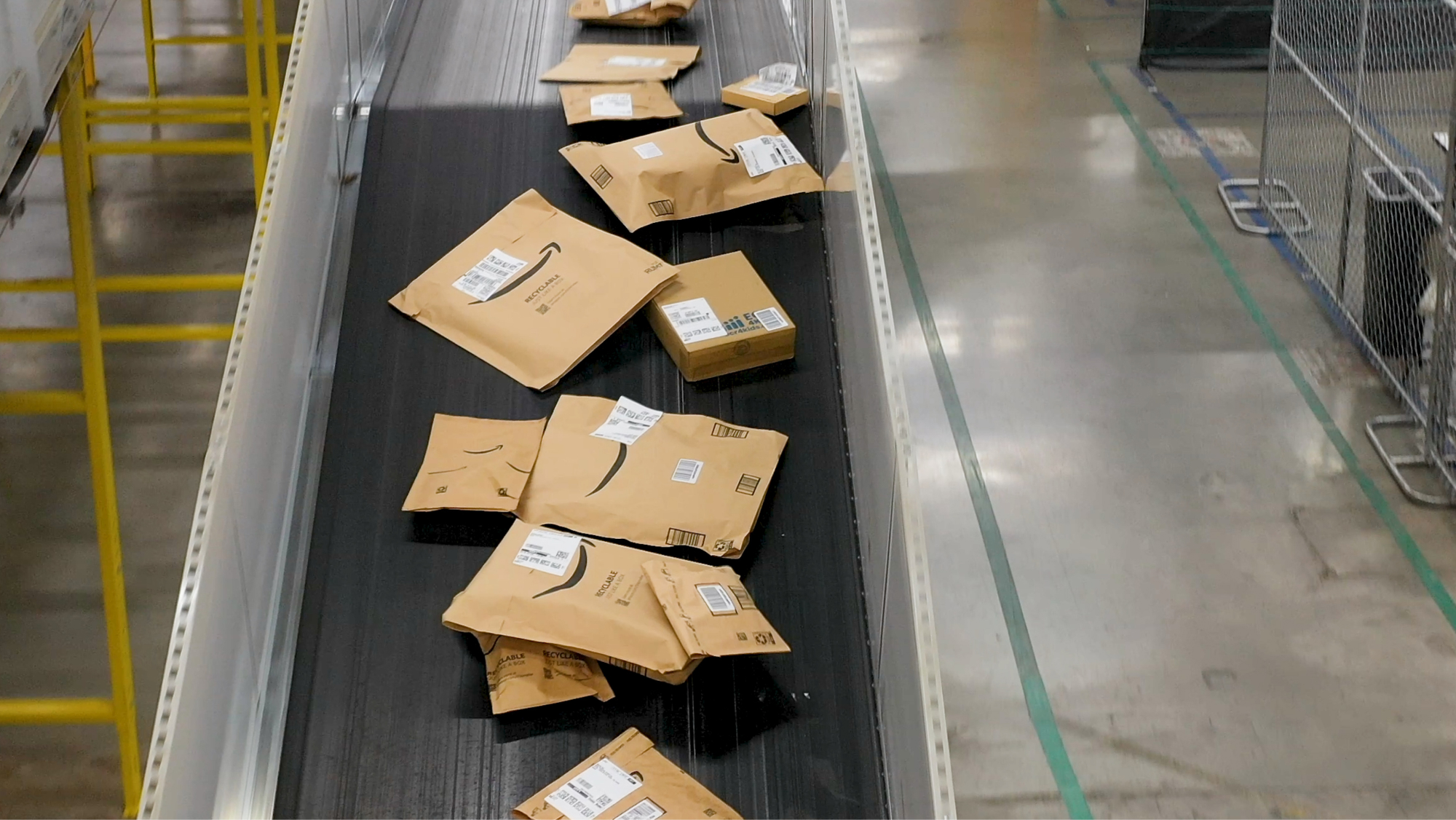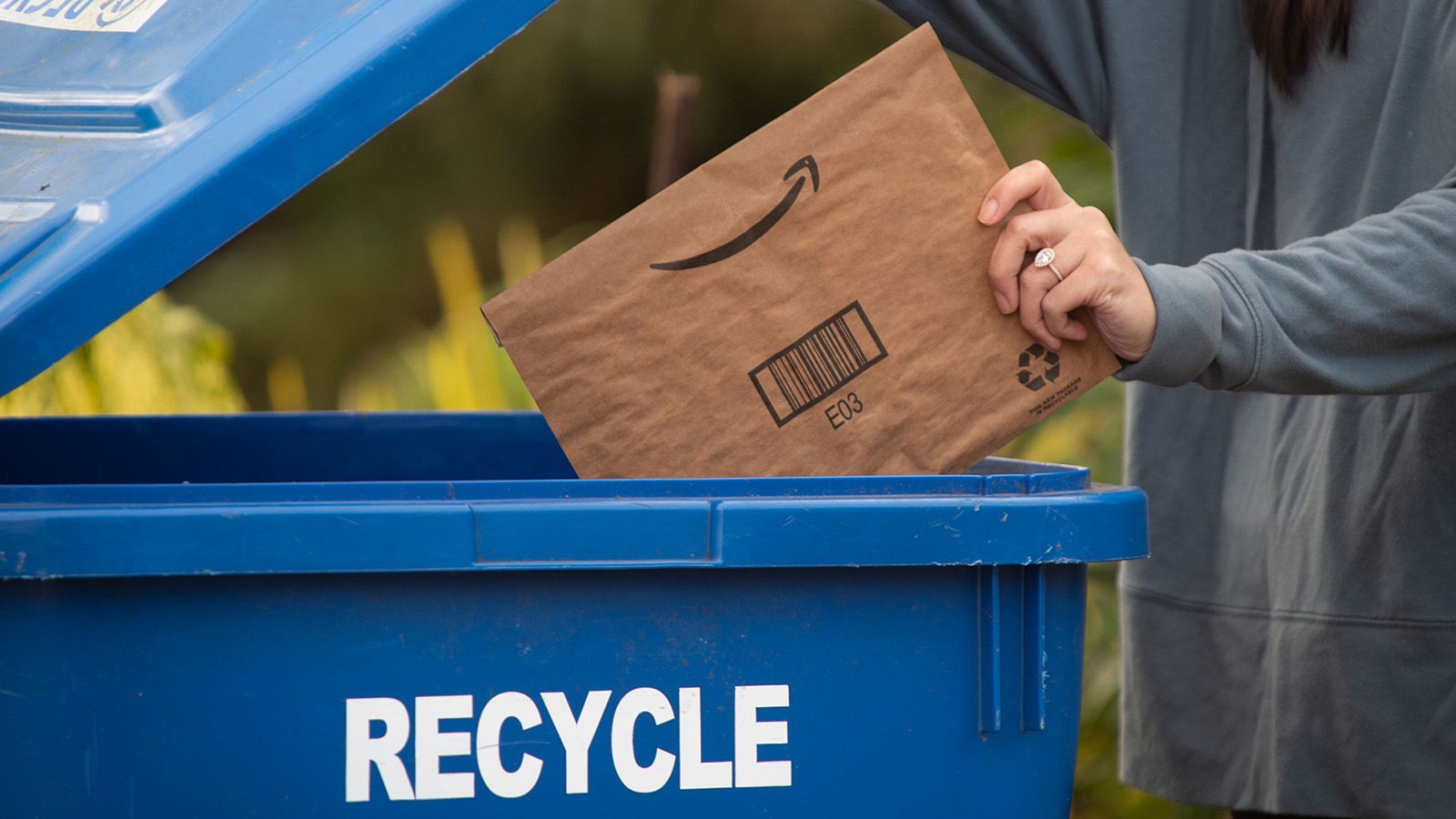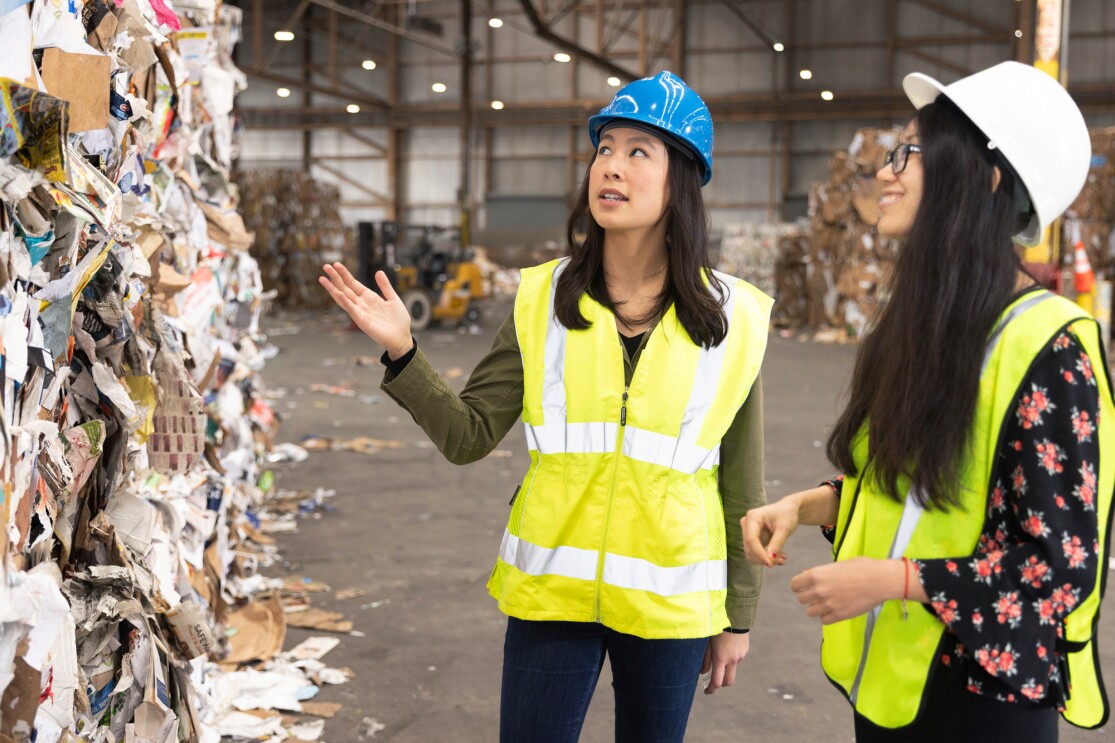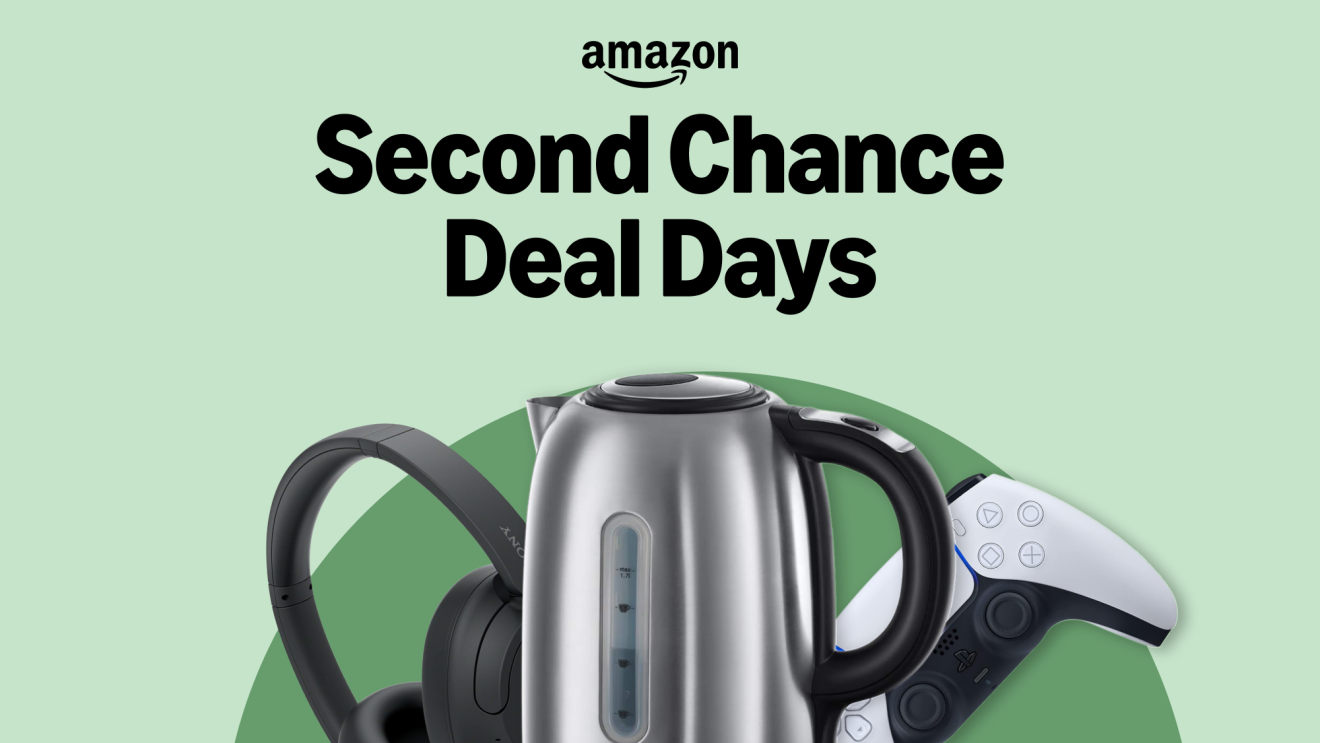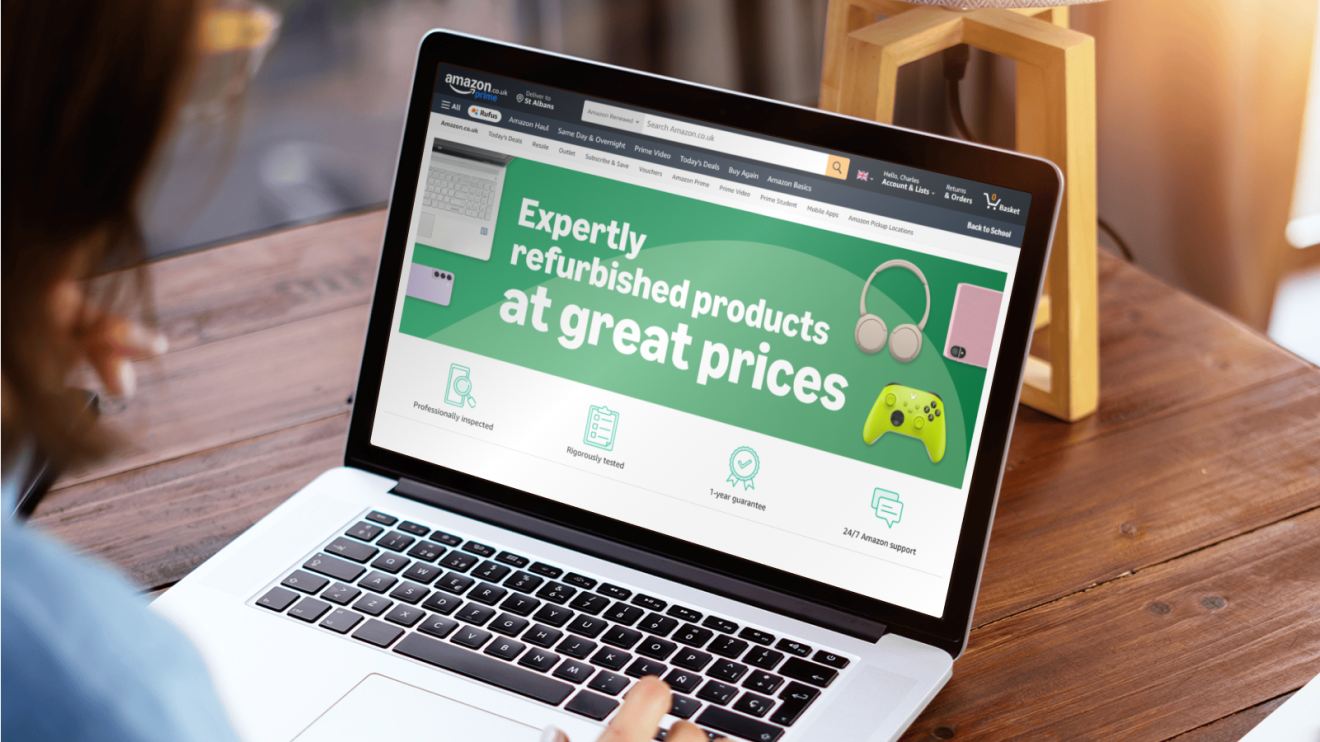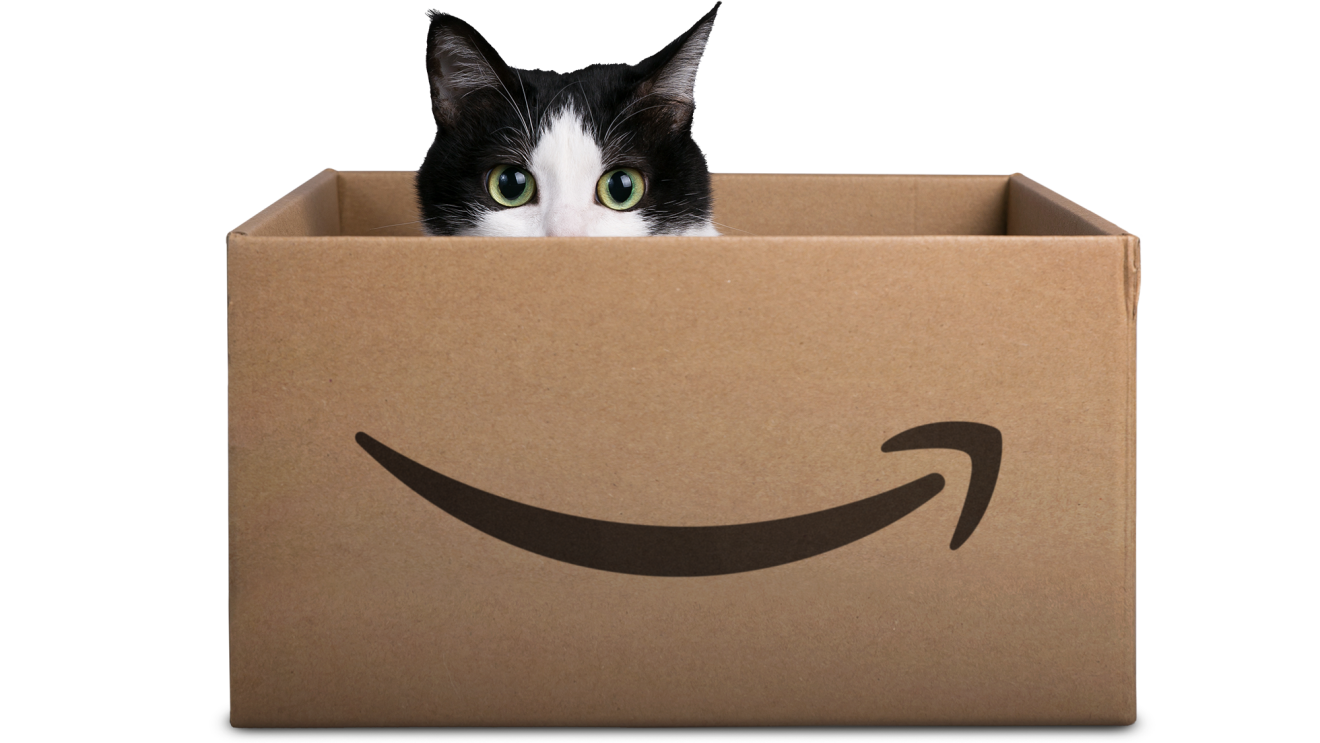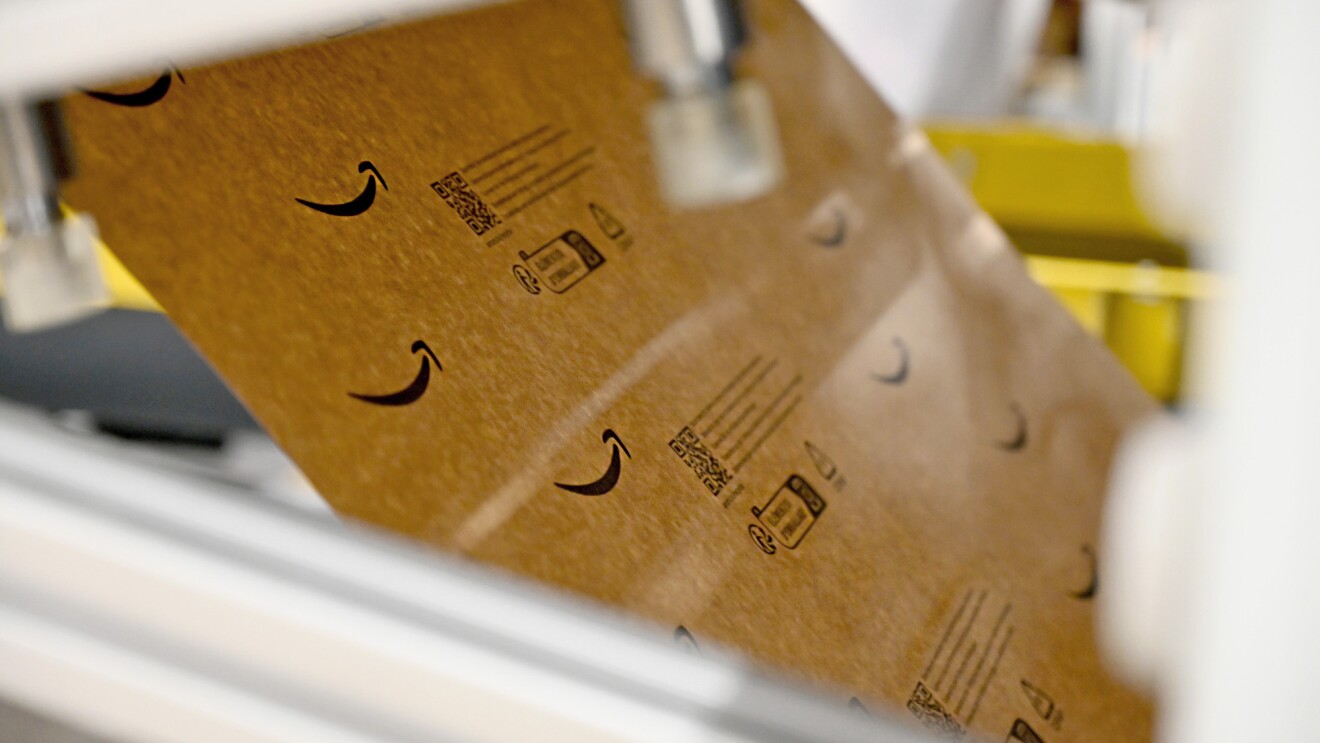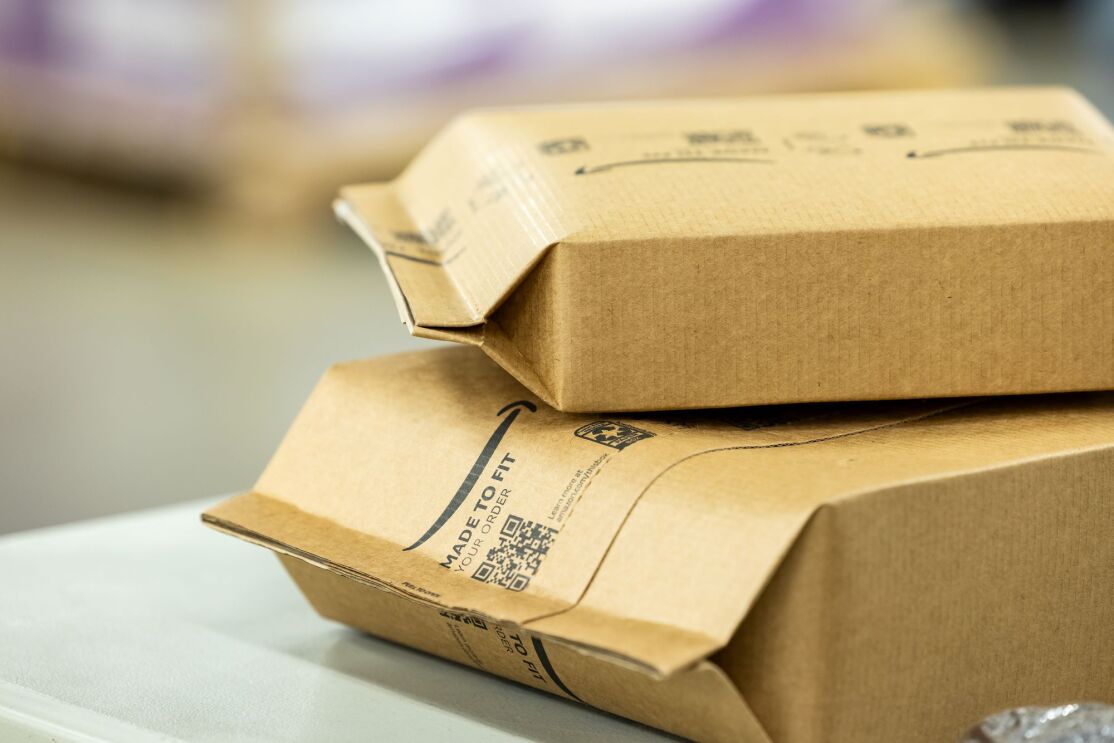Every day, Amazon ships millions of orders around the globe, working hard to make sure products reach customers quickly, safely, and with the least amount of packaging necessary.
Reduced packaging means using fewer materials and generating less recycling for customers to manage at home—without compromising product protection.
Smarter packaging, less waste

In 2022, we removed single-use plastic delivery packaging from our network in the UK and across Europe. Today, all our delivery packaging in Europe is 100% recyclable.
Additionally, one in two Amazon orders in Europe are now delivered without an Amazon box. Instead, they arrive in reduced packaging—like paper bags, cardboard envelopes, or sometimes with no added packaging at all. This helps us avoid unnecessary waste and makes recycling at home easier.
Why we ship products without added Amazon packaging
When it’s safe to do so, we ship items in their original product packaging with just a shipping label attached—for example, a toaster in its branded box or a multipack of nappies in its retail bag. This approach is called ‘Ships in Product Packaging'.
Our engineers created simulated delivery tests to determine which products can ship safely in their original packaging. Using machine learning, we continue to identify more items suitable for this programme, helping reduce waste while ensuring products stay protected.
You'll see a message on the product detail page and at checkout when an item might ship in the product packaging. If you're buying a gift or prefer your order to remain private, you can choose to add Amazon packaging for free with just one click at the checkout.
Key milestones
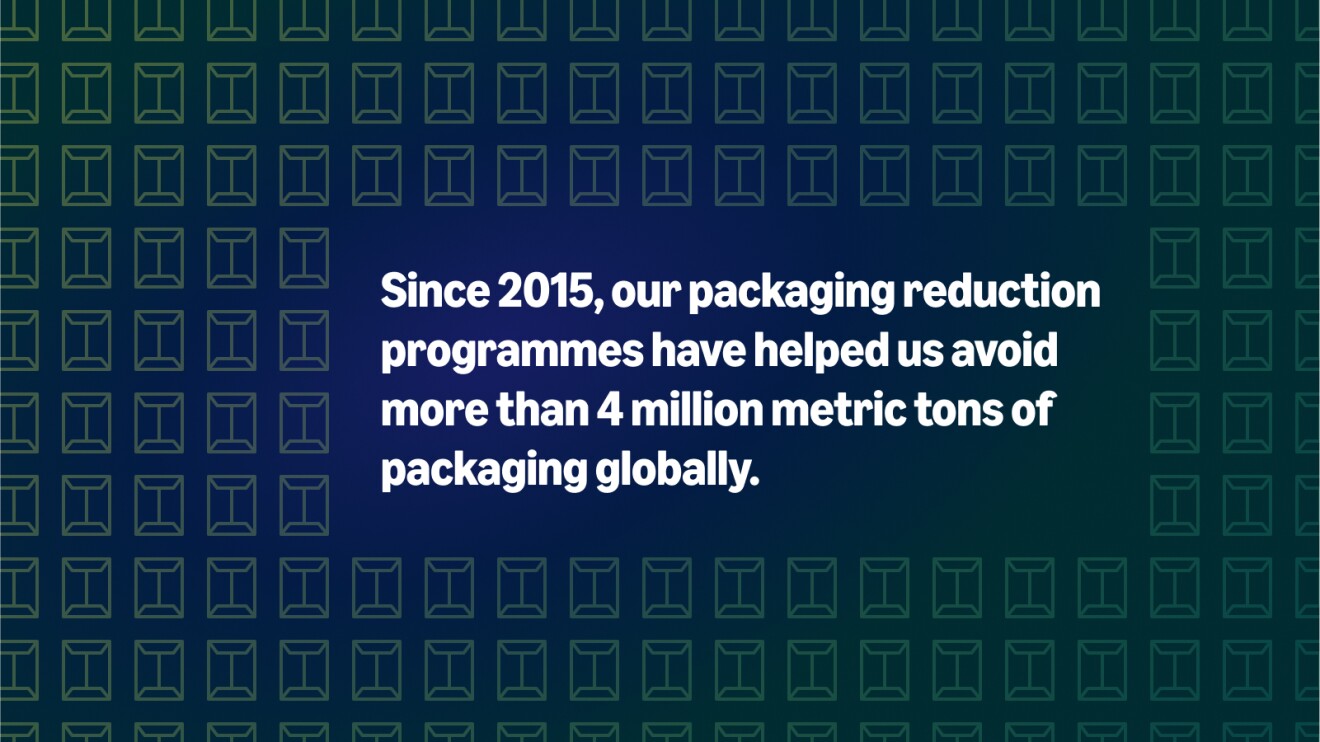
- More than 1 billion orders globally have shipped without added Amazon packaging since 2019.
- In 2024, we shipped 12% of our orders globally without any added Amazon packaging.
- Since 2015, our packaging reduction programmes have helped us avoid more than 4 million metric tons of packaging globally.
Made-to-fit packaging when it's needed
When added packaging is required, we use as little as possible. In the UK, we're installing automated packing machines that build made-to-fit packaging for each order.
These machines use sensors to measure the exact size of a product and create a fitted paper bag around it. This means less empty space, fewer materials used, and packaging that's easier to recycle. The machine applies shipping labels directly, making each package ready for immediate dispatch to customers.
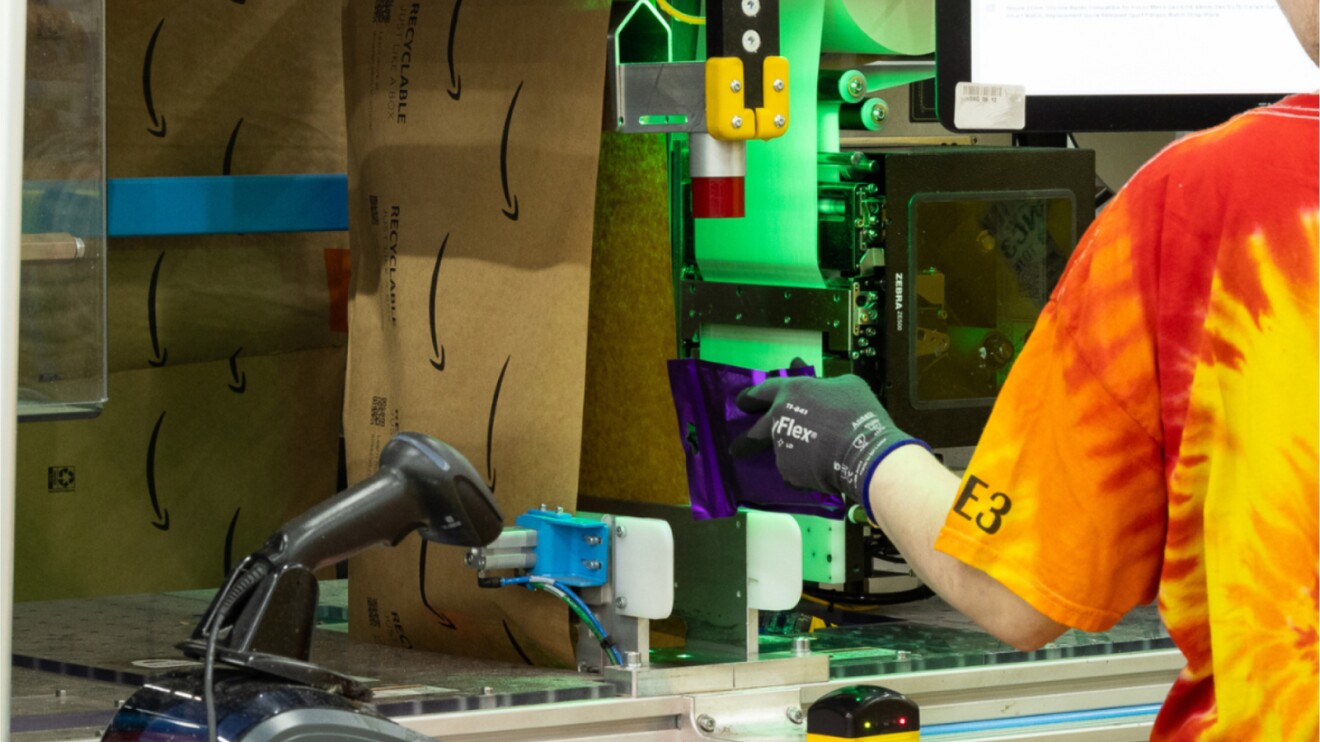
What's next
We're constantly testing and improving how we package and deliver items. Whether it's designing more efficient packaging with our selling partners or introducing new technology in our fulfilment centres, our goal remains the same: to reduce waste and improve the customer experience.
